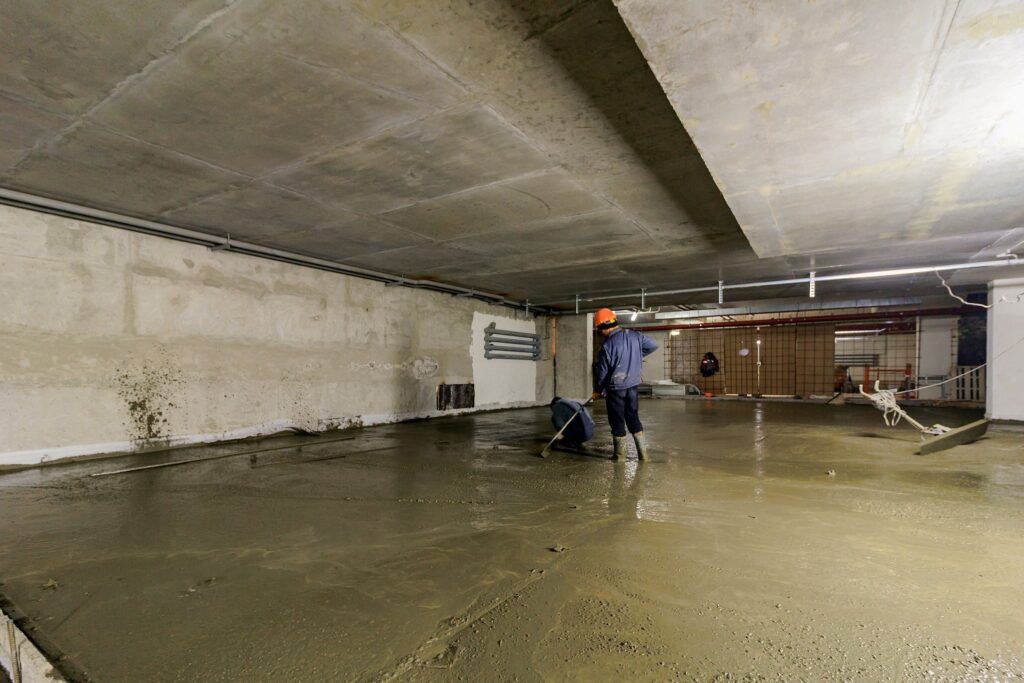Indian homes have basements (or cellars) which are a valuable addition of space. They can be used as storage, additional rooms or utilities. However, they usually have to deal with such undesirable issues as dampness, water leakage, and even damaging the building.
Waterproofing your basement enables you to know that the house is safe of water and the basement area can be used. You will learn here the key contributors to moisture in your basement, key waterproofing measures in the basement and easy methods to keep the basement safe.
Why Moisture Enters Basements
Water can enter your basement walls in many ways:
1. Hydrostatic Pressure
From outside moisture pressing against the foundation.
2. Poor Drainage Around House
Water accumulates around the foundation of a house when soil drops towards your house instead of away from it.
3. Leaky or Clogged Gutters
Rainwater comes running down the sides of the walls and seeps into them.
4. Condensation
When warm, humid air comes into contact with cool basement walls, water droplets form – and so does mold.
5. Cracks in Walls or Floors
Small cracks can be an entry point for water and become larger with greater frequency over time.
Once moisture enters it can lead to damp walls, mold, damp indoor air and weakness of a structure.
Main Methods of Basement Waterproofing Used in India
Here are four key basement waterproofing techniques, explained in everyday language:
1. Interior Sealants
- You paint or coat the inside of the basement walls and floors with water-blocking material.
- Stop small leaks.
- Best for minor moisture but won’t fix bigger issues.
2. Exterior Waterproofing
- This is the strongest method. You dig outside the foundation and put on a waterproof layer.
- It blocks water from entering the walls at all.
- Very reliable but more expensive and needs digging around your home.
3. Interior Drainage System + Sump Pump
- There is a drainage pipe around the basement floor that sends water into a sump pump.
- The pump works only when needed and throws the water outside.
- Great for water that already seeps in, but doesn’t stop new leaks.
4. Crack Injection
- Small cracks get treated from inside by injecting a liquid (like epoxy) that hardens and seals the crack.
- Quick fix for the cracks but not suitable for bigger structural damage.
Quick Comparison: Basement Waterproofing Methods
| Method | Works Like… | Ideal Use | Drawbacks |
| Interior Sealants | Applying water-blocking coat inside | Minor damp patches | Doesn’t fix big leaks or root causes |
| Exterior Waterproofing | Waterproof membrane on outer wall | Heavy leaking or new builds | Expensive and needs excavation |
| Interior Drainage + Sump Pump | Collection and pumping of water | Seepage that’s hard to stop | Doesn’t stop water entry |
| Crack Injection | Filling cracks from inside | Small foundation cracks | Not for deep cracks or structure issues |
Why Basement Waterproofing is Essential
Here are some big reasons to protect your cellar:
- Avoid damp walls and mold – better air quality and health.
- Protect your foundation and basement floors – avoid structural damage.
- Prevent basement flooding – safeguard stored items and living spaces.
- Help your sump pump last longer – less water reduces strain.
- Cut down on energy costs – dry, insulated spaces keep temperature stable.
Pro Tips for Waterproofing Your Basement
- Start early—inspect for cracks or small wet spots.
- Spot-check basement walls regularly during monsoons or heavy rains.
- If leaks are small, try interior sealants first.
- For serious water, call an expert for exterior waterproofing.
- Maintain a good basement drainage system at your home at all times.
- For new construction, put waterproofing in place from the beginning, it’s simpler and less expensive.
Final Thought
Basements–they are great spaces, as long as they are dry. Basement waterproofing is necessary whether you are suffering a wet basement or still in the designing phase of your new home that has a basement/cellar. Apply the correct one, whether it is interior sealant, exterior membrane, drainage system, or crack injection, and protect your home over the years.








